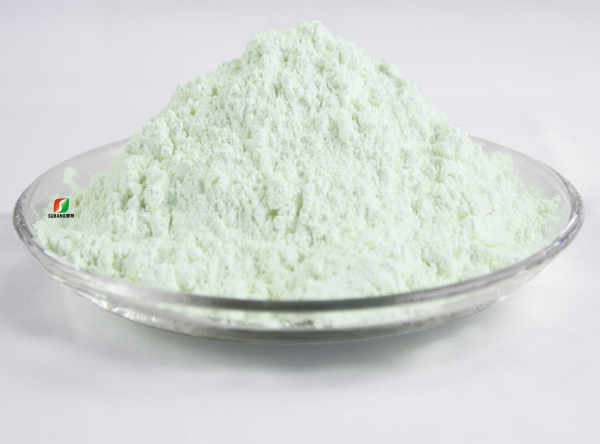Fluorescent whitening agent is a kind of organic compound that can improve the whiteness of fiber fabrics and paper, also known as optical whitening agent and fluorescent whitening agent. Fabrics, etc. are often yellow due to the inclusion of colored impurities, and chemical bleaching was used to decolorize them in the past. The method of adding a whitening agent to the product is now adopted, and its function is to convert the invisible ultraviolet radiation absorbed by the product into blue-violet fluorescent radiation, which is complementary to the original yellow light radiation and becomes white light, which improves the product’s ability to withstand sunlight. of whiteness. Brighteners have been widely used in textiles, paper, washing powder, soap, rubber, plastics, pigments and paints.
Brighteners all have cyclic conjugated systems in chemical structure, such as: stilbene derivatives, phenylpyrazoline derivatives, benzothiazole derivatives, benzimidazole derivatives, coumarin derivatives and Naphthalimide derivatives, etc., among which stilbene derivatives have the largest yield. Use methods and properties to divide brighteners can be divided into four types:
A series refers tofluorescent whitening agents that can generate cations in aqueous solution. Suitable for whitening of acrylic fibers. B series optical brighteners are suitable for brightening cellulose fibers. C series refers to a type of fluorescent whitening agent dispersed in dye bath in the presence of dispersant, suitable for whitening polyester and other hydrophobic fibers. D series refers to the fluorescent whitening agent suitable for protein fiber and nylon. According to chemical structure, whitening agents can be divided into five categories: ① stilbene type, used in cotton fiber and some synthetic fibers, papermaking, soap making and other industries, with blue fluorescence; ② coumarin type, with fragrance The basic structure of bean ketone, used in polyvinyl chloride plastics, etc., has strong blue fluorescence; ③ pyrazoline type, used for wool, polyamide, acrylic fibers and other fibers, with green fluorescence; ④ benzoxazine type, with For acrylic fibers and other plastics such as polyvinyl chloride and polystyrene, it has red fluorescence; ⑤phthalimide type, for polyester, acrylic, nylon and other fibers, with blue fluorescence. The above is the classification of whitening agents. When customers choose whitening agents, they should first understand their own products, so that they can choose the correct whitening agent. And customers should also know that when using whitening agents, whitening agents are only optical brightening and complementary colors, and cannot replace chemical bleaching. Therefore, the colored matter is directly treated with a whitening agent without bleaching, and the whitening effect cannot be fundamentally obtained. And the whitening agent is not more whitening, but has a certain saturation concentration. Exceeding a certain fixed limit value, not only no whitening effect, but also yellowing.
Post time: Jan-24-2022

